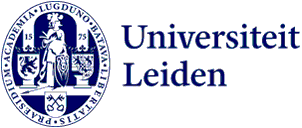
Underexposed colonial past: 'You can suddenly feel like you are connecting with someone from the past'
Attention to the colonial past may be increasing, but many aspects of it are still underexposed. Dutch newspaper De Volkskrant, in collaboration with, among others, Leiden researchers Anne-Marieke van der Wal-Rémy and Alicia Schrikker, therefore created a 'Canon of the Dutch Underexposed Past', which has now been compiled into a book. Van der Wal-Rémy explains more about the project.
'Research into the colonial past often focuses mainly on administrative centres like Batavia or Amsterdam, the places where real decisions were taken and big money was made,' Van der Wal-Rémy says. 'But you can also see clearly what colonialism brought about in places like Sri Lanka or South Africa. Ecological colonisation is abundantly clear at the Cape, for example.'
Historical sensation
She therefore responded enthusiastically to the initiative of Volkskrant journalists Tjerk Gualthérie van Weezel and Wieteke van Zeil to create a canon of underexposed colonial history. Together with them, ten other scholars and representatives of the Rijksmuseum and Wereldmuseum, 50 windows were created, each of which is hung on an object from the collection of the Rijksmuseum or Wereldmuseum.
'Historian Johan Huizinga talks about the historical sensation in his work, which makes you feel that you are suddenly in direct contact with the past,' says Van der Wal-Rémy. 'By working with objects, the canon sometimes evokes that feeling too. For example, one of the objects my Leiden colleague Alicia Schrikker suggested for the canon was a palm leaf letter from 1785 written in Sinhala, explaining why a Sri Lankan woman cannot appear at a trial. You can then suddenly feel that you are connecting with someone who would otherwise have remained invisible.’ One of the other windows Alicia Schrikker worked on were butterflies from Boven-Digoel, the punishment camp in Papua where the Dutch sent their political opponents in the late 1920s and 1930s. The prisoners were forced to collect these butterflies. The butterflies catch the story of resistance and oppression in surprising wat, and illustrate how natural history collections can carry political meaning.

Unknown genocide
Other, more abstract themes are also given concrete expression through the choice of objects. For example, the dodo represents the declining biodiversity that many areas suffered during colonial times. 'In the canon we hung it on Mauritius, but from my own research I know that in South Africa the wildlife population already started to decline in the first 10 or 15 years after the VOC built a fort there,' says Van der Wal-Rémy. 'The governors at the time realised this too, because placards were soon issued that you needed a hunting licence to shoot certain game. The colonial authorities hoped that this would put an end to conflicts with the Khoisan. The traditional way of life of the local people was under severe pressure from the arrival of settlers and the subsequent decline in biodiversity, which increased the likelihood of conflict. The authorities were keen to prevent this.'
This approach was not very effective, another window shows. The elite still obtained so many hunting licences that species like the Cape lion became extinct and the Cape (Knysna) elephant and other species were driven far north and east. Deprived of their main source of food, the Khoisan then felt compelled to hunt the colonisers' livestock. 'Then "hunting licences" were granted to shoot at the Khoisan themselves,' says Van der Wal-Rémy. 'That happened on such a huge scale that you could even use the term genocide for it, but very few people know about this. I am very happy that we have now managed to include it in the canon, because it lets you reach so many people.'
More research
The canon was published window by window in the Volkskrant from July 2022 and has now been compiled into a book. How does Van der Wal-Rémy see the future of the project? 'I hope it encourages people to do more research on these subjects. At the Cape, for instance, there is a wonderful archive that is well worth visiting. In retrospect, it would also have been nice if a bit more attention had been paid to the other Caribbean islands than just Curaçao and Sint Maarten, so there is also something to be gained there. And I would really like it if a children's version of the project were made, as happened with the other canon.'
Anne Marieke Van der Wal-Rémy and Alicia Schrikker were part of the canon's editorial board. In addition, associate professor Fenneke Sysling contributed with her article on racial studies and science. The canon is available on the website of de Volkskrant and as a book (both in Dutch).
